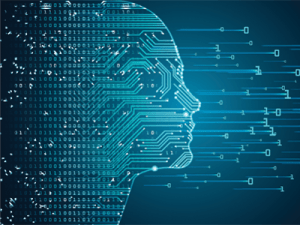Legal Blog
AI-Generated Works Dilemma: Balancing AI Terms of Service With Contractual Obligations
 Like any emerging technology, AI is entangled with legal issues. These legal issues may not make for compelling entertainment, but they are important in shaping the use and potential of AI.
Like any emerging technology, AI is entangled with legal issues. These legal issues may not make for compelling entertainment, but they are important in shaping the use and potential of AI.
The Legal Intelligencer
Pop culture generally depicts artificial intelligence (AI) in extremes, from benevolent helpers like Rosie the Robot from “The Jetsons” to malevolent entities bent on humanity’s destruction, like HAL 9000 from 2001 or SkyNet from “The Terminator” movies. While these depictions make for captivating entertainment, they are far from the reality of today’s AI. Like any emerging technology, AI is entangled with legal issues. These legal issues may not make for compelling entertainment, but they are important in shaping the use and potential of AI.
While no member of the Jetson household had to accept terms of service before instructing Rosie the Robot, contracts—terms of service—governing the use of AI, such as Dall-E and Midjourney, carry significant implications that users and their counsel should understand. This is especially true when creators utilize AI to generate works and designs for clients. For example, consider the scenario where a furniture store commissions a design firm to create a unique carpeting design that can be used to manufacture carpets to be sold at the store. Looking to expedite the creation of the design, the designer inputs a prompt to their chosen AI tool, which promptly generates a design. Let’s use this scenario as the starting point to explore some pertinent questions.
Ownership of AI-Generated Designs
Under U.S. copyright law, ownership of designs typically resides with the creator unless they assign their rights to their client in writing (copyright assignments must be in writing; see 17 U.S.C. Section 204). In this case, though, there is another layer. Who owns the work created by the AI? To answer that question, one must turn to the AI’s terms of service.
Midjourney’s terms of service state that “User owns all assets they create with the services to the fullest extent possible under applicable law.” (see “Terms of Service,” visited March 9, 2024). Similarly, Dall-E’s terms of service state that “as between you and OpenAI, and to the extent permitted by applicable law, you retain your ownership rights in Input and own the output. We hereby assign to you all our right, title, and interest, if any, in and to output” (see “Terms of Use,” visited March 9, 2024). While such terms may resolve the issue in many cases, they fall short here because the assignment may not have much value.
The Copyright Office has determined that copyright in AI-generated work can only be registered if there is a sufficient level of human involvement, although the specific level of involvement remains unclear [see Thaler v. Perlmutter, No. CV 22-1564 (BAH) (D.D.C. Aug. 18, 2023)]. While this ruling may not directly affect the question of ownership, it significantly impacts the enforceability of rights in AI-generated works.
AI-Generated Designs Are Not Exclusive
When clients hire a designer to create a carpeting design, they often seek an exclusive, original design distinct from designs used by others. In the traditional situation without AI involvement, the contract between the designer and the client typically states that the design will be exclusive to the client, even if the client does not own the copyright in the design.
While Midjourney and Dall-E’s terms of service state that the user owns all rights in the AI-generated work, they also contain language giving the AI the right to use that output. Thus, Midjourney’s terms of service state that:
by using the services, You grant to Midjourney, its successors, and assigns a perpetual, worldwide, non-exclusive, sublicensable no-charge, royalty-free, irrevocable copyright license to reproduce, prepare derivative works of, publicly display, publicly perform, sublicense, and distribute text and image prompts You input into the services, as well as any assets produced by You through the service. This license survives termination of this agreement by any party, for any reason.
Dall-E’s terms of service are slightly less explicit, stating, “We may use content to provide, maintain, develop, and improve our services, comply with applicable law, enforce our terms and policies, and keep our services safe.”
The meaning of both provisions is the same: any work created by the AI will be incorporated back into the system and utilized to generate new works in response to new user prompts. While Midjourney offers a potential solution, if users pay a subscription fee, this option only requires Midjourney to use its best efforts to refrain from publishing any output.
This scenario raises multiple questions for our carpet designer. If the contract requires exclusivity for the design, AI utilization would seemingly breach this provision. Dall-E’s terms of service acknowledge the potential dissemination of designs to others, noting that “due to the nature of our services and artificial intelligence generally, output may not be unique and other users may receive similar output from our services.” This makes it very difficult, if not impossible, for designers utilizing AI to assure clients of design exclusivity.
Further, the Copyright Office’s stance on copyright in AI-generated works means that neither the designer nor the client could sue a third party for infringement if that third party used a design incorporating elements of the AI-generated design. A lawsuit for copyright infringement cannot be brought without a copyright registration, as the U.S. Supreme Court ruled in Fourth Estate v. Wall-Street.com, 586 U.S. ___, 139 S. Ct. 881 (2019). However, as discussed above, the Copyright Office generally does not issue registrations for AI-generated works.
What If the AI-Generated Design Infringes on Someone Else’s Work?
A standard agreement between a designer and their client typically includes a warranty and representation that the design will be original and noninfringing. However, can a designer who uses AI to create a design genuinely make such a representation? At best, it appears challenging to assert a complete absence of infringement. More than contractual breaches are at stake. The designer’s reputation could be on the line, too, if it becomes known that AI was used to create a design that unintentionally infringed upon another’s work.
Taking this a step further, multiple lawsuits are pending alleging copyright infringement because the AI involved in these cases was trained using copyrighted materials. Assuming these allegations are true, it is possible that in response to a designer’s prompt, an AI could generate a work incorporating elements of someone else’s copyrighted material or the entirety of someone else’s material, potentially leading to copyright infringement liability for the designer.
The designer could also be liable to those involved in manufacturing the carpet for the store and possible wholesale partners, making the consequences for the designer that much worse. While no such cases have yet emerged in the United States, multiple AI companies have offered to indemnify users against claims of copyright infringement (see “OpenAI offers to indemnify ChatGPT customers for copyright infringement,” visited March 9, 2024). However, the value of such indemnification offers may be limited, especially if the AI companies are flooded with requests and cannot afford to indemnify all users.
Furthermore, it remains unclear whether such indemnification from the AI companies would extend to the designer’s client in cases of resale. Although their interests are likely aligned, clients may prefer assurance that their interests will be actively defended. Additionally, the indemnification offered by the AI companies may not cover claims for breach of contract by the client against the designer, leaving the designer potentially liable to their client.
Conclusion
If Rosie the Robot had to grapple with these contract issues, completing her assigned tasks might have become more challenging (perhaps imposing legal requirements on SkyNet could have prevented its homicidal tendencies). The reality is that we must consider these legal provisions, which can carry significant consequences for AI users, most of whom likely overlook them. One solution is to avoid using AI altogether when creating designs, but this seems increasingly unrealistic with each passing day. Rather, contractual language may have to be updated to account for AI and how it functions. However, this adaptation will require time, and likely involve legal disputes. In the meantime, it’s crucial for all parties, including designers, to recognize the risks associated with using AI.
Reprinted with permission from the April 16, 2024, edition of The Legal Intelligencer © 2024 ALM Global Properties, LLC. All rights reserved. Further duplication without permission is prohibited, contact 877-256-2472 or asset-and-logo-licensing@alm.com.
ABOUT MARC MISTHAL
 |
|
Marc P. Misthal is a principal attorney in the firm’s Intellectual Property practice group. With a wide range of clients worldwide, Marc provides counsel to businesses spanning diverse industries, including the fashion, apparel, computer technology, hospitality, restaurant, entertainment, jewelry, luxury goods, home goods, furniture, cosmetics, retail and consumer goods industries.
As part of his practice, Marc has represented clients in federal courts around the country, defending and prosecuting claims of trademark, trade dress, and copyright infringement and, when necessary, obtaining injunctive relief. He has also represented clients in Opposition and Cancellation proceedings before the U.S. Patent and Trademark Office (USPTO) and in proceedings under the Uniform Domain Name Dispute Resolution Policy (UDRP).
